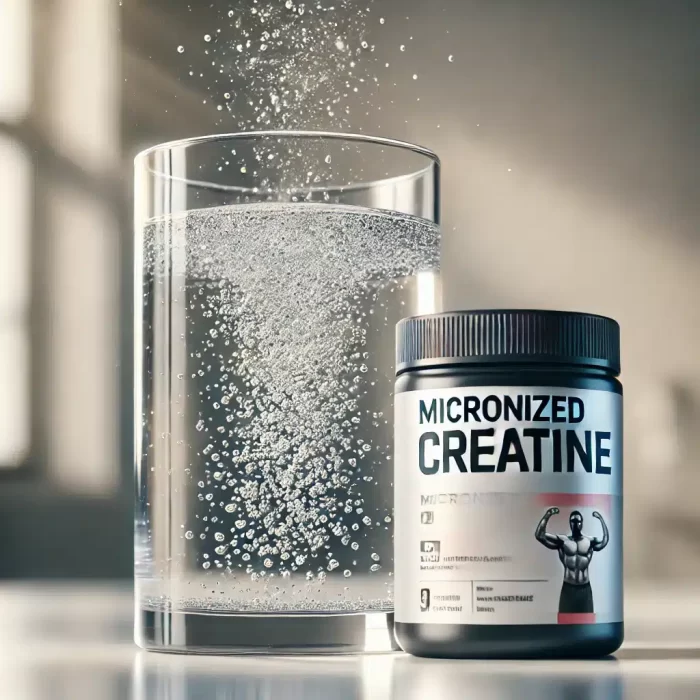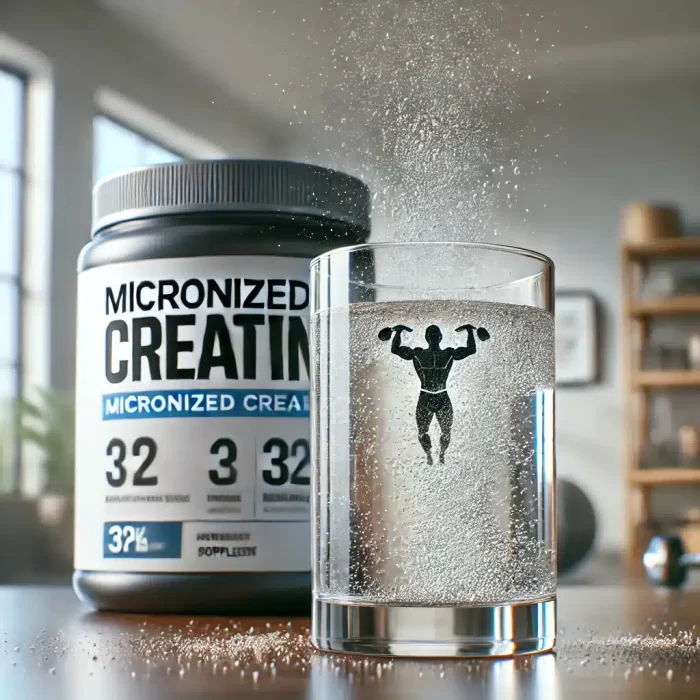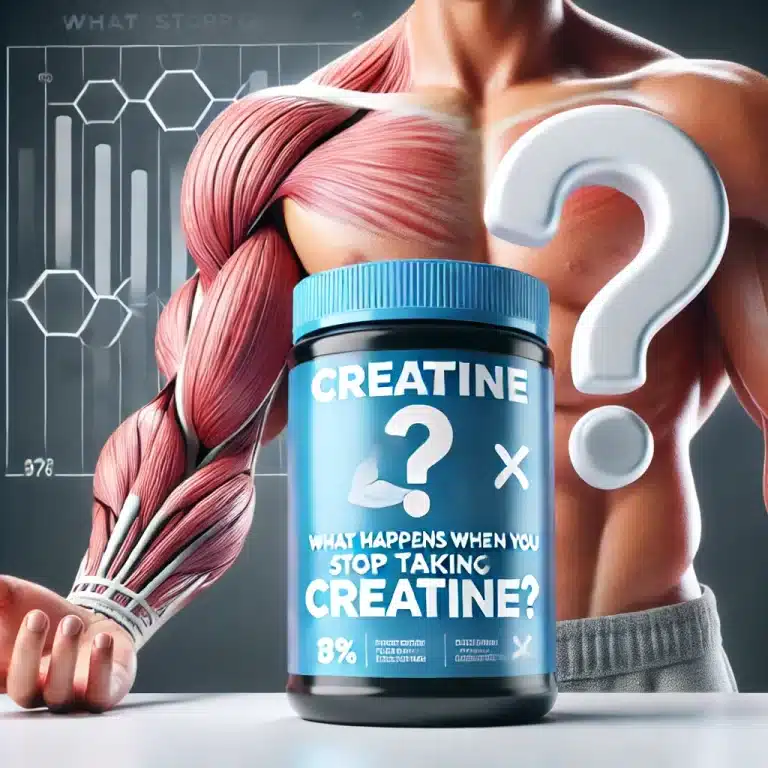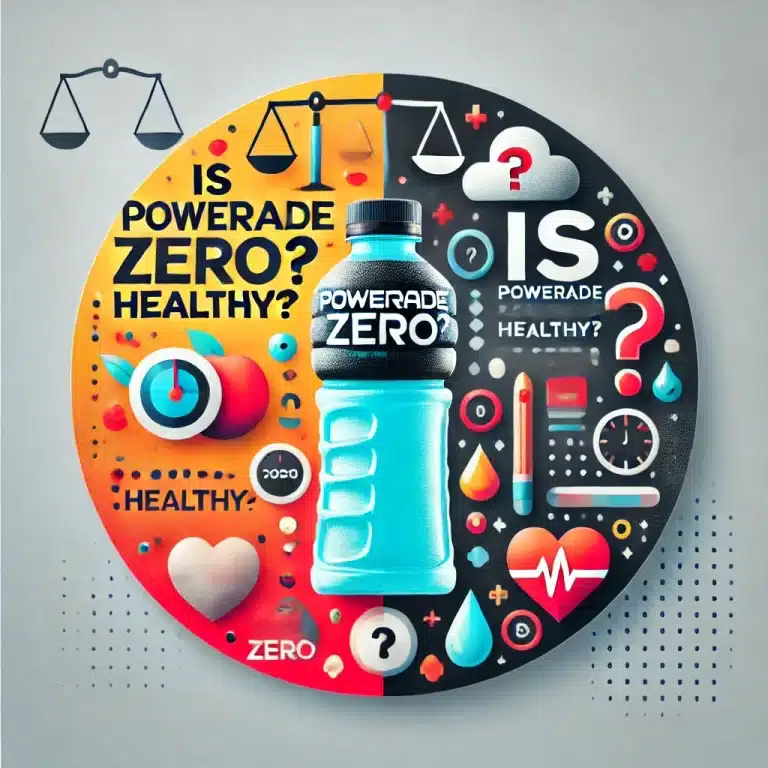What Is Micronized Creatine? A Comprehensive Guide by a Registered Dietitian
The first time I entered a supplement store will always hold special memories. Just beginning to lift regularly, I was perhaps twenty and ready to “get serious.” Knowing that everyone at the gym advised me to take it, I realized I needed creatine. Then I noticed the choices though. Monohydrates, HCL, ethyl ester, buffered, and then micronized creatine.
It sounded like the future. Perhaps even rather overhyped. Though I had no understanding of what set it apart, the word “micronized” merely seemed like something advanced. clean. Technical. Was its strength more like this? Quicker? Ideal for muscular development? Or more costly packaging for the same old thing?
A few years forward, I have seen this topic arise frequently, especially from beginning lifters, athletes, and even those who have been training for some time but wish to enhance their stack.
This post is for you therefore if you’re wondering what micronized creatine is or whether it’s worth your money when standing in front of your cupboard or browsing supplement pages.
We will dissect what it is, how it differs from standard creatine monohydrates, what the science truly says, and whether it affects your outcomes. Spoilers: sometimes what works best for you in real life is more important than what would seem great on paper.
Understanding Creatine: The Basics
It’s important to understand what creatine itself is before delving into the intricacies of micronized creatine. Small levels of the naturally occurring chemical creatine are present in some foods and produced by the body mostly in the kidneys, liver, and pancreas. Mostly found in the muscles, it provides fast energy for high-intensity, short-term activity including weightlifting or sprinting.
Creatine’s major use is in helping the body rebuild adenosine triphosphate (ATP), the fundamental energy currency. This helps creatine assist muscle recovery, boost performance, and perhaps over time increase strength.
What Sets Micronized Creatine Apart?

Mostly due to its unique particle size and improved solubility, micronized creatine differs from other types of creatine. For many people, creatine monohydrate is much more useful and effective when it is broken down into smaller particles via a micronizing process. Here’s how it shines:
- Smaller Particle Size: Comparatively to ordinary creatine monohydrates, the micronization procedure lowers the particle size of creatine by almost 20 times. Though it seems like a small adjustment, this greatly affects the behavior of the supplement in liquids and within the body.
- Enhanced Solubility: Among its most clear benefits is that micronized creatine dissolves in water or another liquid. Sometimes clusters or settle in the bottom of a glass, and micronized creatine spreads more evenly than traditional creatine monohydrates. This makes eating not only more fun but also maybe more bioavailable, which would help your body to absorb and use it more efficiently.
- Reduced Digestive Discomfort: Although regular creatine monohydrates are quite effective, some people find it causes slight stomach trouble, bloating, or cramps. Micronized creatine is milder on the gastrointestinal system and dissolves more readily, so lowering the possibility of unwanted negative effects.
- Consistency in Usage: Micronized creatine guarantees you consume the entire dosage every time, therefore reducing your likelihood of gritty residue at the bottom of your drink. As your body regularly gets the right amount, this consistency can produce superior outcomes over time.
- Versatility in Mixing: Because micronized creatine has better solubility, it may be added to a variety of liquids, from plain water to smoothies, without changing the texture or producing a gritty sensation. This adaptability helps you to fit your everyday schedule.
- Long-Term Stability: The finer particle size also improves the stability of micronized creatine in liquids, so it stays suspended longer and slows down degradation. Those who like to make their supplements ahead of time will especially find this helpful.
The Science Behind Micronized Creatine:
Micronized creatine is still creatine monohydrate chemically. Its chemical composition is not what distinguishes it; rather, its degree of body benefit delivery defines it. By making the creatine particles smaller, micronization guarantees their better solubility in liquids and could hence help with digestion. Practically, though, what does this mean?
- Efficient ATP Regeneration: The main function of creatine is to help create ATP, the energy molecule driving muscle activity. Micronized creatine offers the same increase in energy and power output as conventional creatine monohydrate by guaranteeing complete replenishment of the body’s creatine storage.
- Smoother Delivery: Because micronized creatine is more soluble, it is less prone to cause stomach problems. Sometimes regular creatine monohydrate sits in the stomach without completely dissolving, which could cause bloating or cramps. By dissolving more thoroughly before passing the digestive tract, micronized creatine lowers this risk.
- Optimized Muscle Saturation: Studies reveal that fully saturated muscle reserves are the ideal condition for which creatine supplementation performs best. Because micronized creatine reduces side effects and improves mixability, it makes reaching this saturation simpler and more enjoyable.
- Synergy with Other Nutrients: Micronized creatine is perfect for pairing with carbohydrates or protein since it blends perfectly with other components. When combined strategically, these macronutrients can improve creatine absorption, hence increasing the effectiveness of the supplement.
- Reliable Performance Gains: Among the most researched supplements in sports nutrition is creatine monohydrate, the basis for micronized creatine. Its advantages are well-documented and range from better muscular recovery and cognitive support to higher strength and power output. Micronized creatine offers all these advantages together with more comfort and convenience.
Why Choose Micronized Creatine?
Micronized creatine presents several strong arguments for you to choose it as your supplement. Its special qualities satisfy a range of needs and tastes, so it is a great choice for athletes, fitness fanatics, and everyone else looking for a consistent performance enhancer. Here’s the justification for considering:
- Unparalleled Mixability: Unlike ordinary creatine monohydrates, which sometimes leave clumps or residue in your glass, micronized creatine melts readily in a variety of liquids. Every time you combine it with water, protein shake, or your preferred smoothie, you can bet on a smooth, grit-free consistency.
- Enhanced Comfort: If you have ever felt bloated or uncomfortable in your stomach with conventional creatine, you will value the milder character of micronized creatine. Its enhanced solubility guarantees its simplicity for your digestive system, thereby reducing the possibility of negative side effects.
- Convenience for Busy Lifestyles: Because micronized creatine dissolves quickly, preparation is quite simple. Just combine and go; there’s no need to spend more time swirling or handling leftover residue. Those with hectic schedules who wish for a hassle-free supplement regimen may especially benefit from this convenience.
- Versatility in Usage: The tiny particle size of micronized creatine makes it adaptable enough to be included in many recipes. From post-exercise recovery drinks to workout shakes, its neutral taste and easy blend-ability make it a flexible addition to your diet.
- Reduced Risk of Waste: With conventional creatine, undissolved particles can stay at the bottom of your glass and waste servings. Micronized creatine maximizes its usefulness and potency by guaranteeing the complete dose every time.
- Improved Stability: Because micronized creatine in liquid form is more stable, you can make your drinks ahead of time free from concern about degradation or settling. Athletes on the go or those who prefer pre-made solutions will notably benefit from this; if you want a quicker approach, try the creatine gummies!
- Tailored for Sensitive Stomachs: Micronized creatine is a great starting point for those with sensitive stomachs or those new to creatine supplements. Its mild composition lessens the possibility of digestive problems, so it frees you to concentrate on reaching your exercise targets.
Micronized creatine essentially combines improved convenience and comfort with the known advantages of creatine monohydrate. Whether you’re a top athlete or someone just beginning their exercise path, this is a sensible and efficient option appropriate for contemporary needs and way of life.
How to Use Micronized Creatine Effectively?
Correct use of micronized creatine will help to maximize its advantages. These are some useful guidelines:
Dosage
The usual dosage for supplements including creatine stays the same:
- For five to seven days, load 20 grams daily split into four meals of five grams. This more rapidly saturates your muscle creatine reserves.
- To keep high creatine levels, take three to five grams daily in the maintenance phase.
Timing
Although the timing of creatine is not as important as formerly believed, taking it around your workouts could have little benefits. Often combined with a carbohydrate source to improve absorption, many athletes prefer taking creatine either before or after exercise.
Hydration
Because creatine pulls water into the muscles, maintaining good hydration is essential to prevent dehydration and optimize its effects.
Consistency
Not a fast-fix supplement is creatine. Its full advantages cannot be experienced without regular use over several weeks and months.
Debunking Myths About Micronized Creatine:
Like many supplements, creatine has been the target of rumors and false information. Here is the reality:
- Myth: Creatine Turns Kidneys Into Damage Studies repeatedly find that for healthy people, creatine supplements are safe. Those with pre-existing kidney problems should, nevertheless, see a healthcare practitioner before use.
- Myth: Creatine Causes Too Much Water Retention Although at first, creatine raises water content in the muscles, this is only part of its mechanism for improving performance and muscular development. It does not produce bloating in the manner many people believe.
- Myth: Drastically different from regular creatine monohydrates is micronized creatine. Particle size and solubility define the main differences. Both versions have the same advantages, however, micronized creatine might be readily mixed and more tolerated.
Who Should Use Micronized Creatine?
One flexible supplement that will help a lot of different kinds of people is micronized creatine. Here is a closer view of those who ought to give it some thought:
- Athletes and Strength Trainers: Micronized creatine will help those engaged in high-intensity, explosive sports such as weightlifting, sprinting, or competitive sports especially. It improves strength, power, and recovery so that sportsmen may practice more and perform better.
- Endurance Athletes: Although endurance athletes like cyclists or long-distance runners may also benefit, generally connected with strength sports. Creatine can aid in recuperation and help to sustain energy after strong bursts of exercise.
- Fitness Enthusiasts: Whether your exercise goals are specific or you just go to the gym casually, micronized creatine can boost muscle development, increase workout performance, and speed recovery. This easy addition will improve your program.
- Vegans and Vegetarians: Mostly animal-based foods like meat and fish contain creatine. Those on a plant-based diet generally have reduced creatine levels and can benefit much from creatine as a vegan supplement in terms of muscular function and energy levels.
- Older Adults: Muscle mass and strength naturally drop with aging. Through supporting muscle preservation and enhancing energy metabolism, micronized creatine can help offset these effects. Furthermore, new studies point to possible cognitive advantages, therefore this supplement is quite helpful for elderly people.
- Individuals Recovering from Injury: Creatine is a good tool for those recovering from accidents or surgeries since it might help muscles heal and recover.
- Newcomers to Fitness: If you are just beginning your fitness path, micronized creatine can help you create a strong basis and experience faster results by boosting energy and recovery.
- People with Physically Demanding Jobs: Those in physically demanding jobs, such as construction workers or first responders, could find an advantage in creatine’s capacity to increase strength and lower weariness.
For most people, micronized creatine is safe; but, those with pre-existing medical disorders, such as kidney or liver problems, should see a doctor before beginning supplements. When utilized sensibly, it’s a useful and easily available tool to help support a range of performance and wellness targets.
Micronized Creatine vs Regular Creatine Monohydrate:
Let’s compare the two side by side so you can decide which one fits your needs better.
| Feature | Regular Creatine Monohydrate | Micronized Creatine |
|---|---|---|
| Particle Size | Larger | Much smaller |
| Mixability | Can clump, gritty | Dissolves easily |
| Absorption | Highly bioavailable | Possibly absorbed slightly faster |
| Stomach Tolerance | May cause bloating in some | Easier on digestion for some users |
| Cost | Very affordable | Slightly more expensive |
| Effectiveness | Proven in hundreds of studies | Same ingredient, same effects |
Is micronized creatine therefore better than ordinary creatine monohydrate?
To be honest, not very much Not real performance, but rather comfort and convenience define the advantages. The findings are They are essentially the same.
Who Should Use Micronized Creatine?
Micronized creatine fits for:
- Athletes: Those pursuing strength training or highly intense sports.
- People who want to increase their performance and recovery from their exercise.
- Vegans and Vegetarians: Supplementation can assist close a dietary gap since creatine is mostly derived from animal products.
- As we age, creatine might help maintain cognitive ability and muscle mass.
Choosing a Quality Micronized Creatine Supplement:
When choosing a micronized creatine product, quality and safety must first take the front stage. Here are the elements to give thought:
- Purity: Select items evaluated for toxins and confirmed for purity by outside third-party labs. Search for certificates like NSF Certified for Sport or Informed Choice to be sure the good satisfies strict safety criteria.
- Reputable Brands: Choose companies whose client happiness and openness have a track record. Consult reviews and confirm the brand’s standing in the fitness and wellness scene.
- Creatine Monohydrate Base: Make sure the product states it has micronized creatine mono at least. Steer clear of proprietary blends that might not show the precise creatine content per serving.
- Cost-Effectiveness: Although micronized creatine is sometimes somewhat more costly than conventional creatine monohydrate, the cost should still fit its increased advantages. Watch costly goods with no extra value.
- Expiration Date: Check the expiration date always before making a purchase. While outdated creatine may break down and lose efficacy, a fresh product guarantees potency and effectiveness. Another way to help it last longer is to keep it cool, and dry.
- Packaging: Look for airtight, moisture-resistant packing. This guarantees you get the best possible outcome by shielding the creatine from clumping or degradation.
Keeping these factors in mind will help you to choose a premium micronized creatine supplement that supports your exercise objectives and satisfies your needs with confidence.
Potential Side Effects:
Usually well-tolerated, micronized creatine has a few possible negative effects to be aware of. These consist in:
- Gastrointestinal Discomfort: When first starting creatine supplements, some people may have diarrhea, bloating, or cramps even if less prevalent with micronized formulations. Many times, these symptoms pass as the body adapts.
- Water Retention: Creatine raises muscle water content, which causes a brief weight increase. This is a natural result that helps muscles stay hydrated and perform but could cause little swelling in some people.
- Allergic Reactions: Though rare, some people may have adverse responses to creatine supplements like itching, rashes, or trouble breathing. If this arises, stop using and see a healthcare provider.
- Kidney Concerns: While creatine is safe for those without pre-existing kidney diseases, those should see a doctor before use. Too high dosages could over time tax renal performance.
- Muscle Cramps: Sometimes poor hydration during creatine intake causes muscular cramps. Avoiding this adverse effect depends on keeping well-hydrated.
Many of these adverse effects can be reduced or prevented by beginning with a lower dosage and raising progressively. Always use advised dosages; if you have any questions, see a healthcare professional.
Final Thoughts: Is Micronized Creatine Worth It?
Let us bring it full circle.
What is micronized creatine? Simply crush down creatine monohydrates into finer particles to improve their dissolution in liquids, mix more smoothly, and maybe ease stomach trouble. That is exactly what it is. Not endowed with any particular powers. There is not rocket science.
From a functional standpoint, it performs exactly as conventional creatine monohydrate. Still there are the benefits, the surge in energy, the help towards recuperation. The user experience is the sole actual variation: less grit, less clumping, and possibly somewhat less stomach disturbance.
Athletes with sensitive stomachs, anyone who values comfort and ease, or beginners may find micronized creatine to be a little luxury that pays off. However, there is no compulsion to change if you are already regularly using creatine and have no problems. Results from consistency, hard work, and following your plan, not from flashy product names.
Ultimately, creatine, micronized or not, is still among the most reasonably priced, efficient, and thoroughly investigated supplements available. Thus, identify the version that best fits your way of life, mix it, and keep on.
Whether your creatine clumps or not, those increases won’t build themselves.






